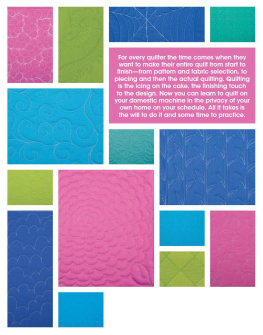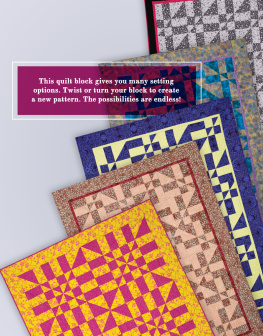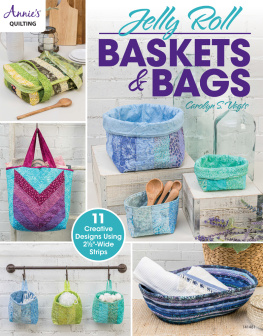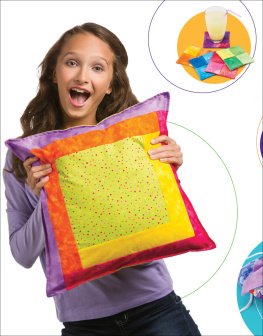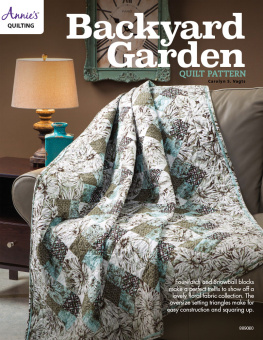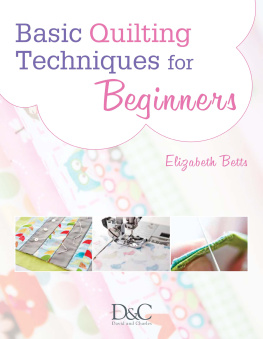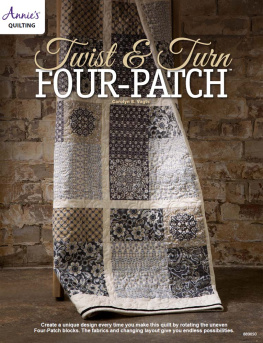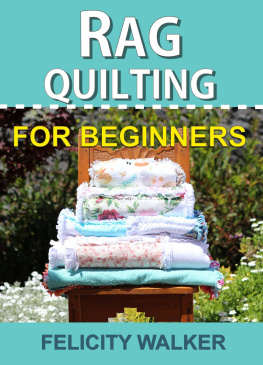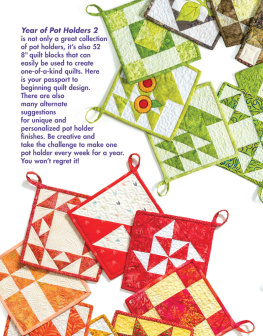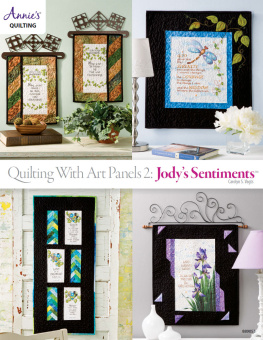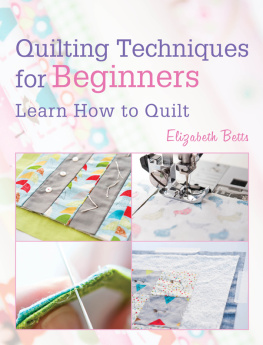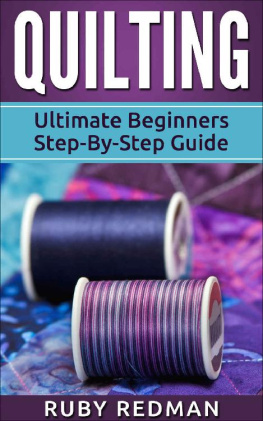Carolyn Vagts - Machine Quilting for Beginners
Here you can read online Carolyn Vagts - Machine Quilting for Beginners full text of the book (entire story) in english for free. Download pdf and epub, get meaning, cover and reviews about this ebook. year: 2017, publisher: Annies, genre: Home and family. Description of the work, (preface) as well as reviews are available. Best literature library LitArk.com created for fans of good reading and offers a wide selection of genres:
Romance novel
Science fiction
Adventure
Detective
Science
History
Home and family
Prose
Art
Politics
Computer
Non-fiction
Religion
Business
Children
Humor
Choose a favorite category and find really read worthwhile books. Enjoy immersion in the world of imagination, feel the emotions of the characters or learn something new for yourself, make an fascinating discovery.
- Book:Machine Quilting for Beginners
- Author:
- Publisher:Annies
- Genre:
- Year:2017
- Rating:3 / 5
- Favourites:Add to favourites
- Your mark:
- 60
- 1
- 2
- 3
- 4
- 5
Machine Quilting for Beginners: summary, description and annotation
We offer to read an annotation, description, summary or preface (depends on what the author of the book "Machine Quilting for Beginners" wrote himself). If you haven't found the necessary information about the book — write in the comments, we will try to find it.
Machine Quilting for Beginners — read online for free the complete book (whole text) full work
Below is the text of the book, divided by pages. System saving the place of the last page read, allows you to conveniently read the book "Machine Quilting for Beginners" online for free, without having to search again every time where you left off. Put a bookmark, and you can go to the page where you finished reading at any time.
Font size:
Interval:
Bookmark:
Carolyn S. Vagts is a wife, mother, grandmother, quilt designer, author, quilt book editor and editor of Quilters World magazine. She also has owned a successful quilt shop.

Carolyn has made a name for herself in the quilting community with her award-winning techniques of mixing traditional piecing with fusible art appliqu. She especially likes to teach beginner quilt classes, wanting every student to have a good first experience with quilting. She also lectures and teaches workshops throughout the country to guilds.
Carolyns designs have been published regularly in several magazines, including Quilters World. She has had designs published in quilting books and has authored four previous books: Learn to Make a Quilt From Start to Finish, I Can Quilt, Learn to Quilt With Panels and Learn to Make Quilted Mug Rugs.
The creative process has been a notable part of her life. She studied drawing, pottery and sculpture in college where she received a liberal arts degree. She finally found her niche in quilting when she was asked to do some design work. That was over 18 years ago, and she has been designing quilts and working in the quilt industry ever since.
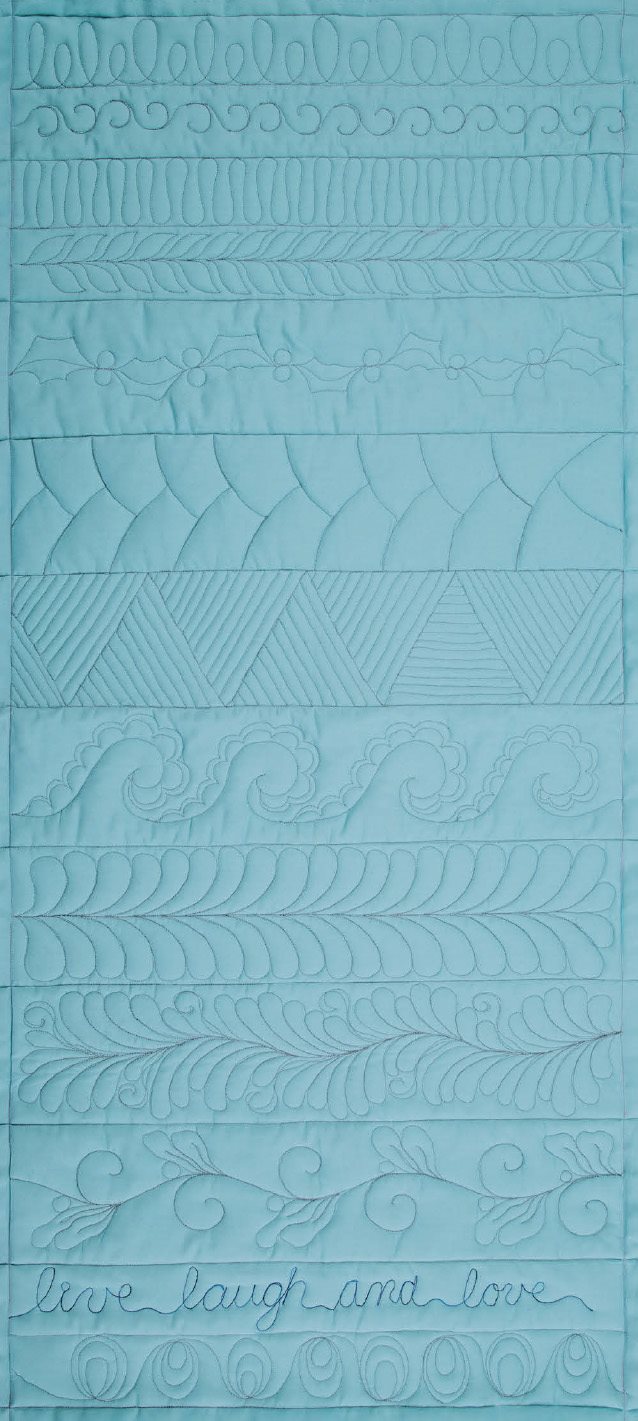
To download templates for easy printing, go to:
AnniesCatalog.com/customers/check_code.html
and enter 141413687
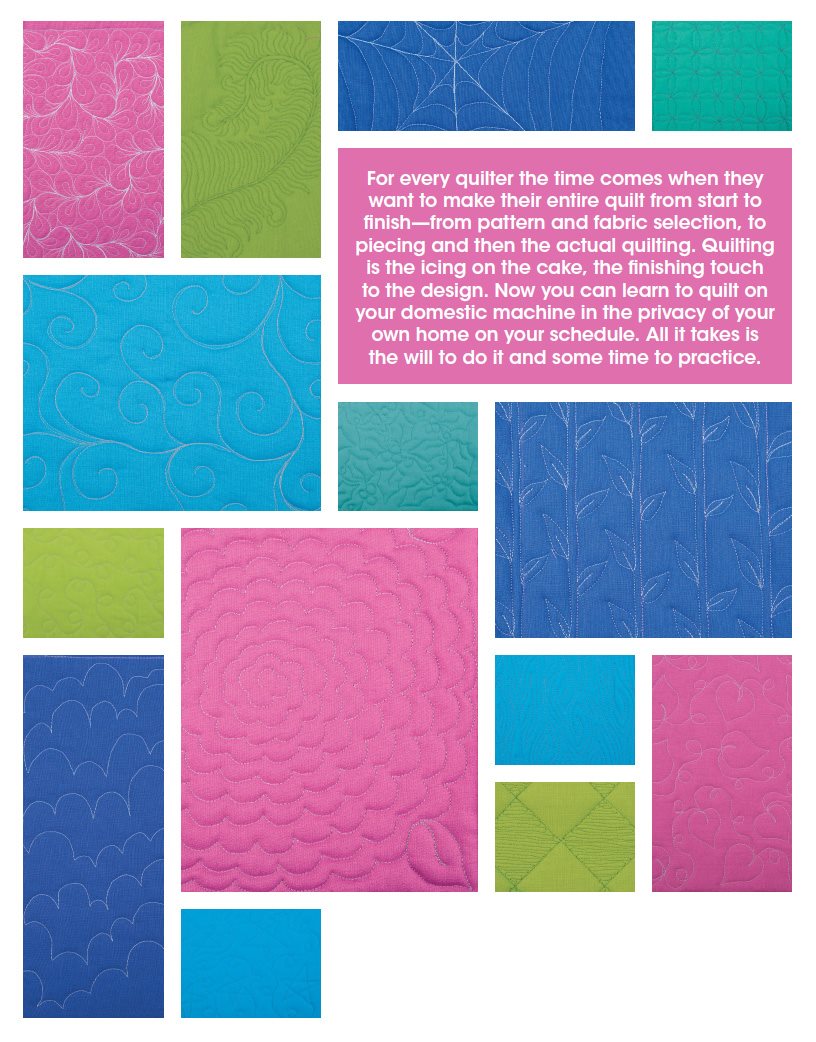
Preparing the Quilt Top for Quilting
Whether youre sending your quilt off to a longarm quilter or youre going to quilt it yourself, there are a few things that need to be done to prepare the top to ensure a nice finish.
Pressing: When the quilt top is complete, a thorough pressing should be done. Make sure that the seam allowances are pressed and lie flat. Trim loose threads. Remember that good flat seams begin when youre piecing, so make it a practice to press between each step as you piece your project. You can never press too much. Youll be thankful you did when you see the end result.
Backing Fabric: To measure and prepare the backing fabric you should first know if youre going to send it to a longarm quilter or if you intend to quilt it yourself. A longarm quilter usually wants the backing to measure 68" larger on all sides than the actual quilt top. You will need to verify this with your longarm quilter making sure you adhere to their specifications. If you are doing the quilting yourself you can reduce the excess to 24" larger on all sides than the quilt top. Thats a safe amount. Its always nice to go a bit larger when at all possible.
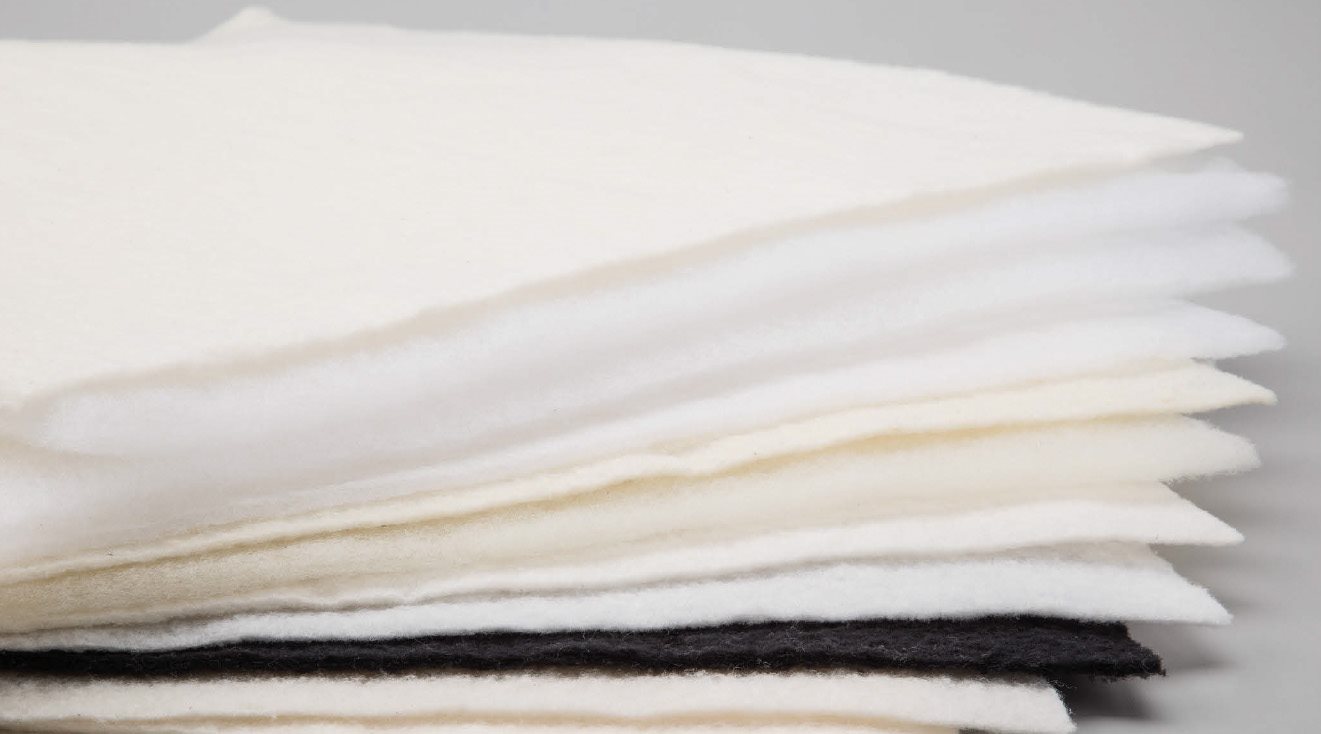
Batting Selection
Batting does make a difference. There are several things to consider when selecting your batting type. How will it be used? Will it be washed a lot? What climate will the quilt be used in? How much quilting are you planning to do on it? How will it drape? Ask the questions and research your choices before you purchase the batting.
Make sure that the batting will meet your needs and expectations. Batting packaging has all the information you need, and if you purchase it without the packaging you can always find the answers on the manufacturers website.
Loft: Loft is the thickness of the batting. It determines how flat or puffy the quilt will be when finished. The flatter the batting the more modern it will look, while puffier batting will create a vintage puckered look. Its a matter of preference. Batting comes in several lofts. The average approximate loft runs from 1/8" to around 1/2", but check each manufacturers information since brands may differ.
Shrinkage: Natural fibers will shrink; synthetic fibers such as polyester do not. Check the packaging for more information.
Quilting distance: Make sure to check the batting package for recommended distance between stitching lines. Knowing how far apart to quilt will help you decide on how to quilt your quilt top. Knowing the attributes of your batting will ensure a nice and lasting finish for your quilt.
Prewashing: Most batting manufacturers recommend that you not prewash your batting, but check packaging for specific product recommendations.
Below is some very basic general information about some of the batting types on the market. It is best to check the batting packaging for each specific brand used for more details. Not all products are the same or equal. As you gain experience you will learn your preferences.
Cotton batting is made with natural plant fibers and is favored by many quilters. It drapes nicely, is soft and is usually about 1/8" thick. Cotton works well for most quilting uses.
Polyester batting tends to be thicker but lighter than natural fibers. Its nonbreathable and is typically used for bedding. It is warmer than cotton but is lighter in actual weight. Thickness varies.
Wool batting is made with natural animal fibers. Wool is very warm but lightweight. It drapes nicely and is a bit loftier than most battings. Wool will hold its shape for the long haul.
Batting blends like cotton/polyester or cotton/wool battings are typically used when the benefits of two different battings are desired. For example, cotton/wool is a good choice when the quilter wants all-natural fibers and the added bonus of both a soft texture and a bit more loft.
Always read the packaging for the batting youve chosen for how far apart to stitch, whether to prewash and to find out how much it may shrink.
Its always a good idea to make sample quilt sandwiches, called batts, of the batting types along with notes about what needle and thread you used to achieve the sample so you can repeat the finished results.
Layering & Basting
If youre going to quilt your own quilt, here are your options and how best to prepare.
Sandwiching or layering is the process of putting together the pieced quilt top, batting and the fabric backing to ready the quilt for the actual quilting process. There are several ways to do it. Depending on the size of the quilt top, it can be done on a tabletop, a counter or the floor.
Place the backing, batting and quilt top in the following order. First, the backing fabric should be placed with the right side of the fabric down and taped or secured in place so that the fabric is wrinkle free and taut. If you are pinning the fabric on a carpeted floor, T-pins work great for this purpose. Next, smooth out the batting on top of the backing. Make sure it is straight and wrinkle free. And last, center and smooth the pieced quilt top right side up over the batting. Once the top is nice and smooth, youre ready to secure it for quilting.
Pin basting is done with safety pins. Curved #1 safety pins are recommended for this process. Once the backing, batting and pieced quilt top are layered and smooth, pinning through all layers about every 6" should hold the layers together and prevent puckers or folds on the back. A smooth, flat surface on both the front and the back of your quilt is the desired result. I recommend that you start pinning your quilt sandwich from the center and work your way to the edges. This way, if there is any slack in any of the layers it will work its way out as you go.
Font size:
Interval:
Bookmark:
Similar books «Machine Quilting for Beginners»
Look at similar books to Machine Quilting for Beginners. We have selected literature similar in name and meaning in the hope of providing readers with more options to find new, interesting, not yet read works.
Discussion, reviews of the book Machine Quilting for Beginners and just readers' own opinions. Leave your comments, write what you think about the work, its meaning or the main characters. Specify what exactly you liked and what you didn't like, and why you think so.

